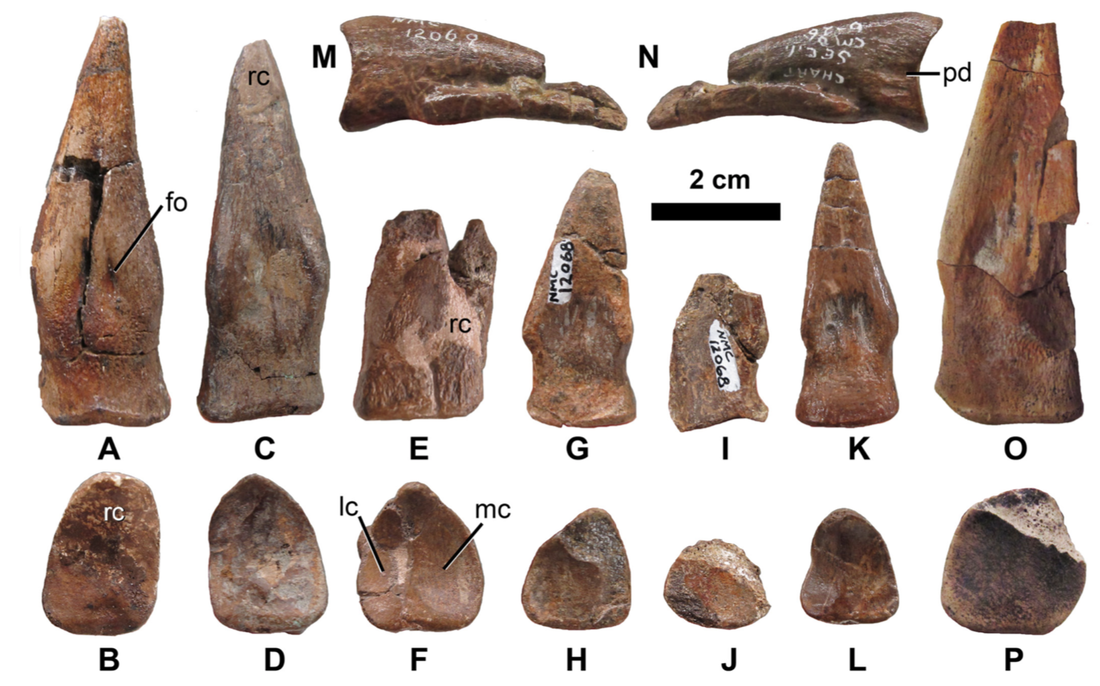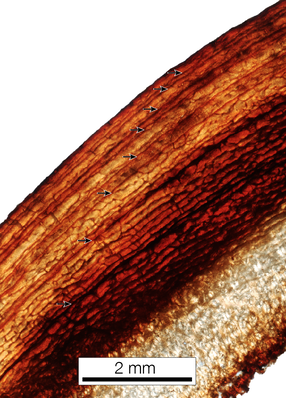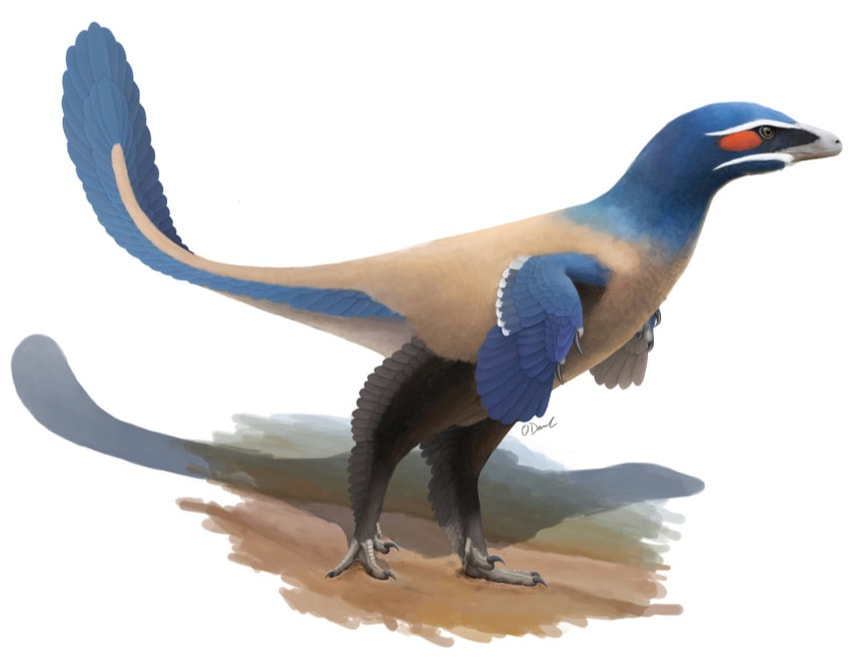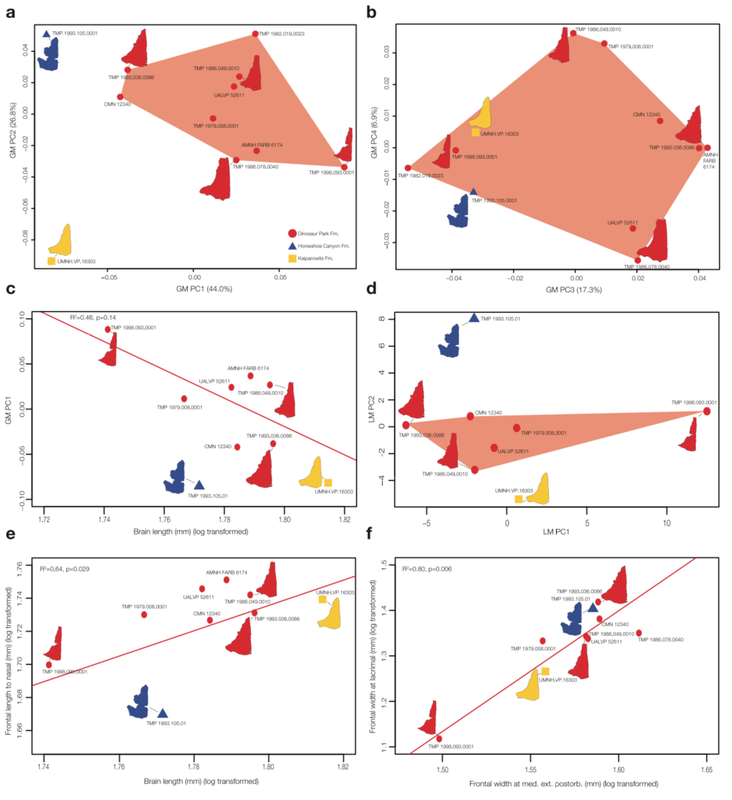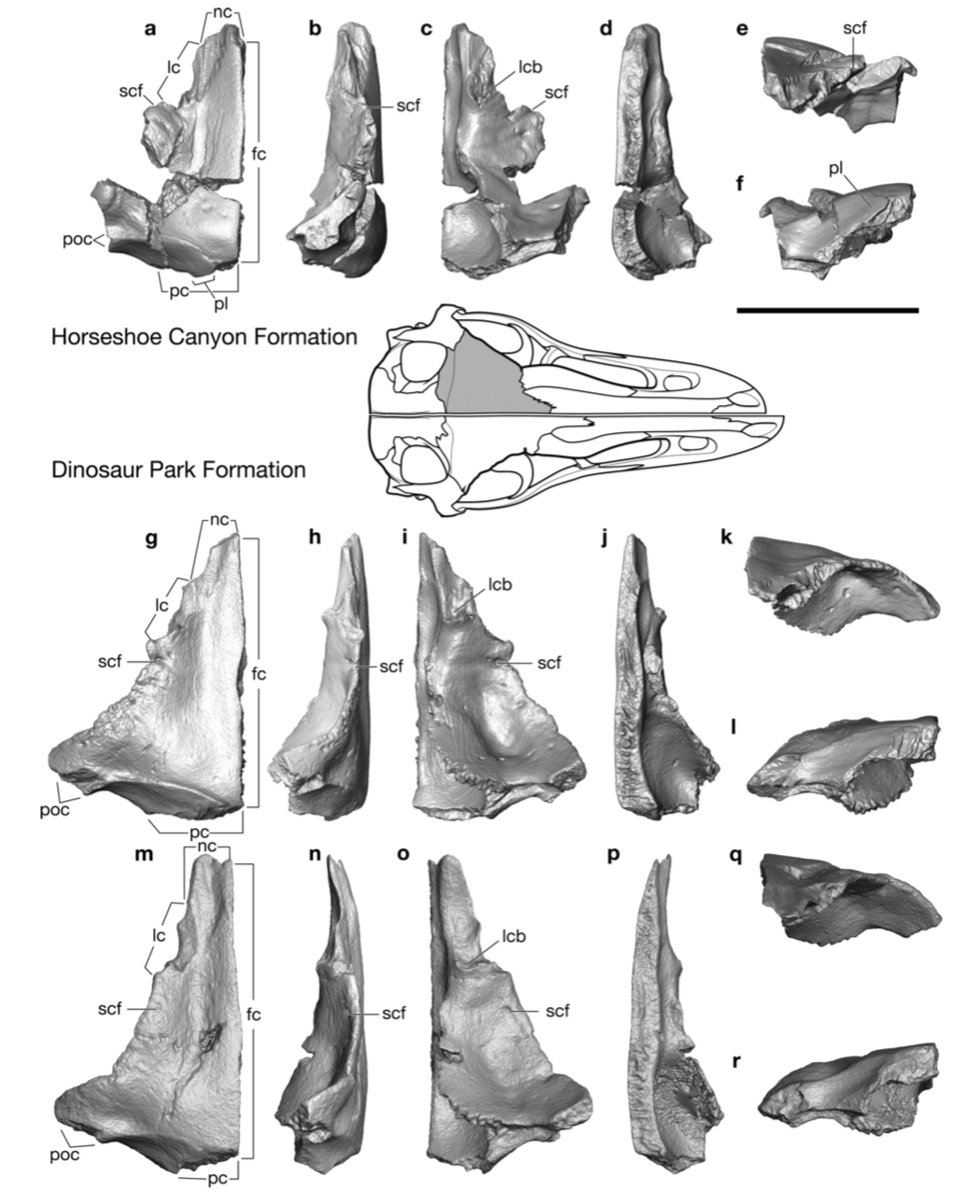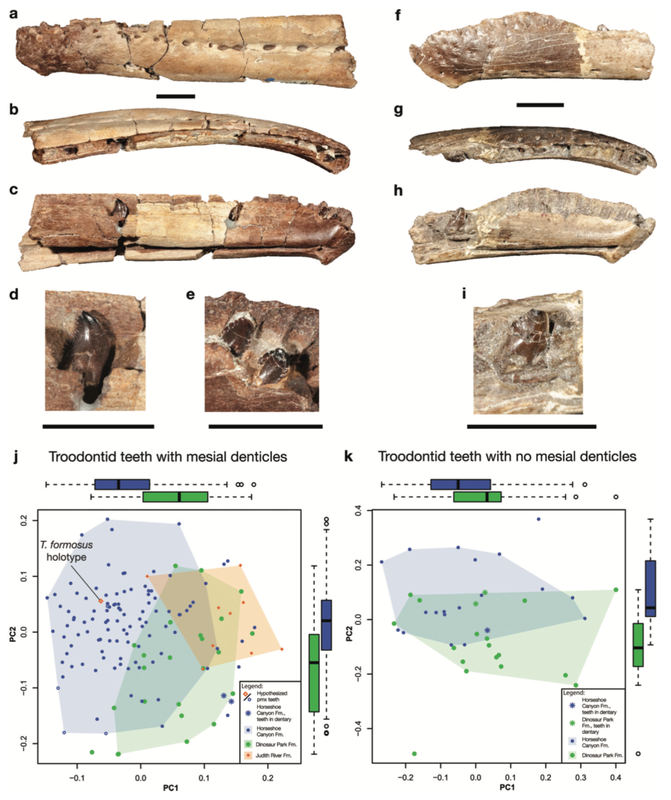Secondary Research Projects
In addition to my primary research, I am involved in mutliple projects investigating a range of questions, from naming new dinosaurs to examining sedimentary basins to studying evolutionary trends in pinniped mating systems
Theropod Biodiversity and Macroevolution
Combining multiple lines of evidence to aid in species discovery and understanding evolutionary patterns
I have been involved in several studies investigating theropod (and dinosaur) evolution and/or naming new theropod species. These projects frequently make use of a combination of methods, such as morphometrics, phylogenetics, histology, and biostratigraphy.
I have been involved in a number of project investigating morphological variability in North American ornithomimid dinosaurs. This began with my undergraduate honours project, describing the first evidence of gregarious behaviour in North American ornithomimids. The evidence consisted of three individual Ornithomimus edmontonicus (or Dromiceiomimus brevitertius, depending on the status of that particular synonymization) skeletons found in close association. In addition to using these specimens to make some inferences regarding ornithomimid behaviour, the material from these specimens facilitated further collaborations wherein we reviewed of the taxonomic utility of various components of ornithomimid post-crania, particularly the pedal phalanges and unguals (McFeeters et al 2018a, McFeeters et al 2018b). As well, as noted above, the skeletons in this study were later sampled to form the core data for my research on ornithomimid osteohistovariability (Cullen et al 2014b)
|
(Larger partial ornithomimid skeleton, Cullen et al 2013)
|
(Pedal ungual II of various ornithomimids, McFeeters et al 2018a)
|
(Pedal ungual III of various ornithomimids, McFeeters et al 2018a)
|
|
Another particularly interesting ornithomimid project I've been involved with, led by Brad McFeeters, focused on a partial skeleton at the Royal Ontario Museum (ROM 1790). Over the course of this research, we determined that this animal likely represents a distinct species of ornithomimid, and thus it was erected as a new genus and species (Rativates evadens). As part of this project, I performed osteohistological analyses that established that ROM 1790, despite being considerably smaller than a number of other ornithomimid skeletons known from Alberta, was in fact much older than them (determined through skeletochronological comparisons between ROM 1790 and previously sampled ornithomimids). As part of this project, a life reconstruction of Rativates was created by palaeoartist Andrey Atuchin.
This project was published in the Journal of Vertebrate Paleontology in 2016.
|
(Reconstruction of Rativates evadens, by Andrey Atuchin)
|
|
More recently, I was involved in a project led by my PhD supervisor David Evans that investigated putative differences between troodontid cranial material found in the Horseshoe Canyon Formation and the Dinosaur Park Formation. This project used morphometrics to analyze frontal and tooth morphology (in addition to qualitative morphological descriptions) in North American troodontids, and led us to name a new taxon, Albertavenator curriei, from the Horseshoe Canyon Formation. We also commented on the taxonomic status of Troodon, arguing that due to the inability of troodontid tooth morphology to reliably distinguish between different North American species, that Troodon formosus should be restricted to material in the Judith River Formation (pending the discovery of additional cranial material to facilitate a more thorough evaluation of T. formosus), with Stenonychosaurus inequalis being used for cranial and other skeletal material of troodontids from the Dinosaur Park Formation. My primary contributions to this project involved the frontal morphometrics and discussions of troodontid taxonomy. This is part of a broader series of projects analyzing theropod cranial morphometrics, and will also have further implications for Canadian troodontid taxonomy. Our work on Albertavenator was given a life reconstruction by Oliver Demuth.
This project was published in the Canadian Journal of Earth Sciences in 2017.
|
(Reconstruction of Albertavenator curriei, by Oliver Demuth)
|
|
(Geometric and linear morphometrics of North American troodontid frontals, Evans et al 2017)
|
(Comparison of Horseshoe Canyon and Dinosaur Park Fm troodontid frontal morphology, Evans et al 2017)
|
(Linear morphometrics of isolated and in-place North American troodontid teeth, Evans et al 2017)
|
Since these papers, we have expanded this work to a broader overview of theropod biodiversity patterns in the Dinosaur Park Formation. This involved anatomical comparisons, morphometric analyses, and biostratigraphic studies examining faunal turnover of theropods in the formation. This work has been presented at the SVP and CSVP conferences, and is currently under peer review for publication. Once published, I will add figures and summarize the results.
Evolution of Sexual Dimorphism and Polygyny in Pinnipeds
Quantifying dimorphic morphology in extant and extinct taxa
|
My M.Sc. research used geometric morphometrics to show that males and females of sexually dimorphic, polygynous, pinnipeds can be identified based on the shape of their skulls (in addition to size differences). These extant relationships were used to hypothesize that one of the earliest fossil relatives of pinnipeds, Enaliarctos emlongi, was likely sexually dimorphic (of a degree similar to extant dimorphic otariids), and that cranial shape sexual dimorphism and a harem-based polygynous mating system are likely the ancestral condition for pinnipeds. We postulated that some of these traits may have evolved as a result of climate-driven ocean upwelling changes leading to greater mass accumulation & colony formation, and consequently higher selection for dimorphic traits and polygynous mating systems.
This research was published in Evolution and was the subject of the May 2014 issue cover. |
|
(Comparison of diagnostic morphological characters of several fossil enaliarctine species, Cullen et al 2014a)
|
(Geometric morphometric analysis of pinniped skull shape, incorporating both extant and extinct taxa, Cullen et al 2014a)
|
(Ancestral character estimations of dimorphism and mating systems in pinnipeds, Cullen et al 2014a)
|


